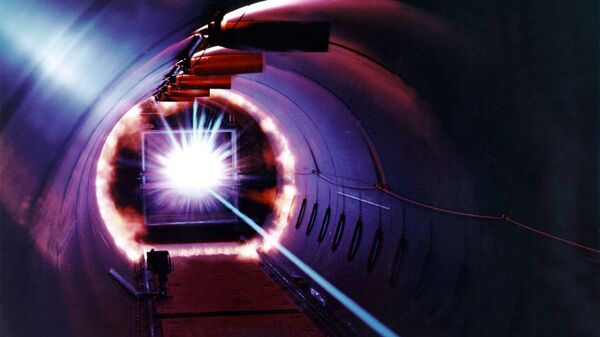On Saturday, the PLAAF said it was looking for bidders for developing systems that would support an airborne, offensive laser weapon. While the details are scant, the titles of the two bids published on weain.mil.cn give something of a hint at the PLA’s ideas: “procurement plan for airborne laser attack pod” and “price inquiry on procurement plan for controlling software module of laser attack platform,” according to Weihutang, a military affairs column associated with China Central Television.
The Weihutang report, published on the program’s Sina Weibo account, speculated that the laser pod was likely an offensive weapon and not a targeting tool like those already in common use around the globe, according to the Global Times.
The South China Morning Post noted Tuesday that the PLA wasn’t starting from scratch with these requests, either, noting that a paper by the Aviation Industry Corporation of China’s Manufacturing Technology Institute and the Military Resident Representative Bureau of Special Equipment of PLA Rocket Force describes a prototype airborne laser weapon.
Such a weapon could be useful for attacking enemy aircraft or for intercepting missiles, but only if its power is greatly enhanced over the capabilities of present laser technology, the Global Times noted.
The PLA already fields a vehicle-mounted laser weapon, the LW-30 air defense system showcased at the Zhuhai Air Show in 2018. According to Army-Recognition, the LW-30 fields a 30-kilowatt laser capable of intercepting unmanned aerial vehicles and light aircraft at a distance of up to 25 kilometers.
Zhuhai - China Air Show etkinliği değişik tiplerde Çin Hava Savunma sistemleri gösterimine sahne olacak. LW-30 30kW gücünde laser hava savunma sistemi ve Rus TOR-M kopyası FM2000 hava savunma sistemleri ilk dikkat çekenler pic.twitter.com/smLvUcHURa
— ÖMER ÇAY (@Dromercay) November 4, 2018
The Pentagon has been working on offensive and defensive laser weapons for some time, including ones that would be mounted in aircraft such as the AC-130 gunship and even inside the bomb bay of the B-1B Lancer supersonic bomber. However, neither of these programs has come to fruition as of yet.
US funding for directed energy weapon research and development has doubled since 2017 as the Pentagon rushes to field a new generation of laser weaponry, especially for intercepting long-range anti-ship missiles. However, space-based applications are also being considered.
The US Navy’s most powerful laser weapon at present, the ship-mounted High Energy Laser and Integrated Optical-dazzler with Surveillance (HELIOS), is capable of just 60 kilowatts of power at present, but Rear Adm. Ron Boxall, who heads the surface warfare directorate for the Chief of Naval Operations, has indicated the service’s goal is to ramp that power up to a sizzling 500 kilowatts in the next few years.



